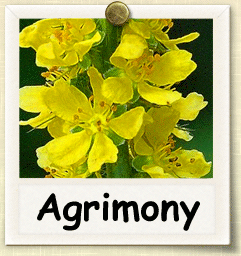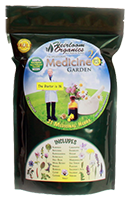|
Home > Guides > Herbs > Agrimony |
|
How to Grow Agrimony | Guide to Growing Agrimony |
|
|
|
|
| |
 |
|
Overview |
|
|
|
|
|
| |
|
| |
Agrimony was introduced to the Americas from Europe, where it has had a long history of use dating back to the Romans and ancient Greeks. These cultures, and other Mediteranean peoples, prized Agrimony for an array of medicinal uses, including wound healing, asthma and as a sedative. During the Middle Ages, this unique herb was revered for its supposed magical qualities, and later on preeminent English herbalist Nicolas Culpepper also touted the healing virtues of Agrimony. After introduction to North America, Agrimony gained a reputation for alleviating symptoms of fever with native peoples. |
|
| |
|
|
| |
Growing Guide
GROWING NOTES
At full maturity, Agrimony will grow to 20” or more with the leafy base sending up spikes of small, richly-scented yellow flowers from mid summer onwards.
The seed can be tricky to germinate, but once established the plant is tenacious.
Agrimony prefers full sun to part shade and well-drained soil. Water moderately.
For best results, stratify seeds for 4-8 weeks by mixing seeds with small amount of moistened vermiculite in a small plastic bag and placing into refrigerator. Check regularly, adding water if needed to maintain moisture. If seeds begin to germinate, transplant immediately.
MAINTAINING
After this, seeds can be sown in flats or small containers. Cover seeds with a thin layer of soil, approximately 1/4" or twice the thickness of the seed. Keep moist until seeds begin to germinate, and gradually introduce starts to outdoor conditions by placing outside during days and finally overnight once spring temperatures begin to increase in late spring. Transplant outdoors once seedlings have reached a height of approximately 4".
|
|
| |
|
| |
Heirloom seeds are the gardeners choice for seed-saving from year-to-year. Learning to save seeds is easy and fun with these books. Before you harvest, consider which varieties you might want to save seeds from so that your harvesting practice includes plants chosen for seed saving. Be sure to check out our newest seed packs, available now from Heirloom Organics. The Super Food Garden is the most nutrient dense garden you can build and everything you need is right here in one pack. The Genesis Garden s a very popular Bible Garden collection. The Three Sisters Garden was the first example of companion planting in Native American culture. See all of our brand-new seed pack offerings in our store.
|
|
| |
|
|
| |
Harvesting Guide
HARVESTING
The leaves can be cut anytime as needed. while the flowers can be cut with a snip or scissors when they begin to bloom.
SAVING SEEDS
|
|
| |
|
|
|
| |
|
|
|
|
|
| You can find this variety in the following Seed Packs: |
|
 |
|
| Click the packs below to see some of our other wonderful products |
|
|
|
|
|
|
|